Massage Get in touch with its numerous benefits
Massage can be a important tool to help you take charge of your health and well- being. See if it’s right for you.
Massage used to be available only through luxury health spas and high-end health clubs. now, massage remedy is offered in businesses, clinics, hospitals and indeed airports. However, learn about its possible health benefits and what to hope during a massage remedy session, If you’ve never tried massage.
What’s massage?
Massage is a common term for pressing, rubbing and manipulating your skin, muscles, tendons and ligaments. Massage may break down from light stroking to deep pressure. There are numerous different kinds of massage, including these common types
Swedish massage. This is a soft form of massage that uses long strokes, kneading, deep circular movements, vibration and tapping. It helps you feel relaxed and reenergized.
Deep massage. This massage style uses slower, more- strong strokes to target the deeper layers of muscle and connective tissue. It’s normally used to help with muscle damage from injuries.
Sports massage. This is alike to Swedish massage, but it’s geared toward people involved in sport exercise to help prevent or treat injuries.
Trigger point massage. This massage focuses on areas of tight muscle fibers that can form in your muscles after damages or overuse.
Benefits of massage
It is generally considered part of integrative remedy. It’s little by little being offered along with standard treatment for a wide range of medical conditions and situations. Advantages can include
Reducing stress and adding relaxation
Reducing pain and muscle soreness and stress
Improving circulation, energy and alertness
Lowering heart rate and blood pressure
helping immune function
Some studies have introduce may also be useful for
Anxiety
Digestive diseases
Fibromyalgia
Headaches
Insomnia related to stress
Low back pain
Myofascial pain syndrome
Nerve pain
Soft tissue strains or injuries
Sports injuries
Temporomandibular joint pain
Upper back and neck pain
Beyond the benefits for specific conditions or troubles, some people enjoy because it oftentimes produces feelings of caring, relief and connection.
Despite its advantages, is not intended as a relief for regular medical care. Let your doctor know you are trying and be sure to follow any standard treatment plans you have.
Risks of it
Most people can benefit from it. even so, it may not be proper if you have
Bleeding troubles or take blood- thinning medicine
Burns or healing injuries
Deep Tone thrombosis
Infections
Broken bones( fractures)
Severe osteoporosis
A actually low platelet count( severe thrombocytopenia)
Discuss the pros and cons of with your doctor, especially if you’re pregnant or if you have cancer or unexplained pain.
Some forms of can leave you feeling a bit sore the coming day. But should not naturally be painful or uncomfortable. However, speak up right down, If any part of your does not feel right or is painful. utmost serious problems come from too important pressure during massage.
What you can anticipate during.
You do not need any special medication for. Before a remedy session starts, your therapist should ask you about any symptoms, your medical history and what you are hoping to get out of massage. Your therapist should explain the kind of massage and ways he or she’ll use.
In a typical remedy session, you undress or wear loose- befitting apparel. Undress only to the point that you are comfortable. You generally lie on a table and cover yourself with a distance. Your therapist will leave the room when you undress before the and when you dress after it. You can also have a while sitting in a president, completely clothed. Your therapist should perform an evaluation through touch to detect painful or tense areas and to determine how important pressure to apply.
Depending on preference, your therapist may use oil painting or embrocation to reduce disunion on your skin. Tell your therapist if you might be antipathetic to any constituents.
A session may last from 10 to 90 minutes, depending on the type of and how important time you have. No matter what kind you choose, you should feel calm and relaxed during and after your massage. Breathe typically throughout your massage.
Your massage therapist may play music during your massage or talk to you, but you can tell him or her if you prefer quiet.
still, ask for lighter pressure, If a massage therapist is pushing too hard. sometimes you may have a sensitive spot in a muscle that feels like a knot. It’s likely to be uncomfortable while your massage therapist works it out. But if it becomes painful, speak up.
Chancing a massage therapist
Ask your therapist or someone differently you trust for a recommendation. utmost countries regulate massage therapists through licensing, enrollment or instrument conditions.


